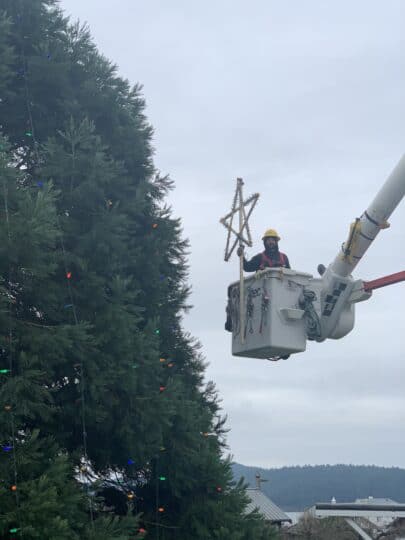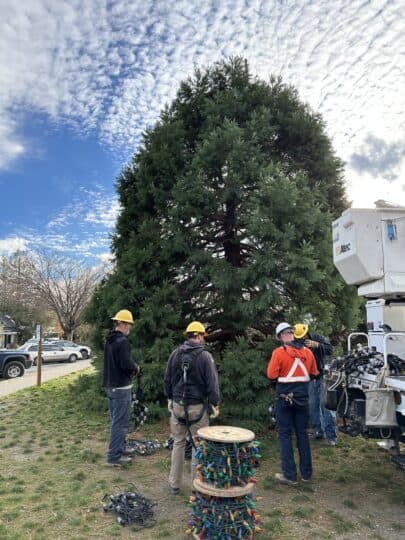Brighten Up the Dark Season
Practice holiday lighting safety and energy efficiency
As the days get colder and the nights get darker, many community members start to adorn their houses and yards with holiday lighting to spread cheer. Holiday lighting is a fun way to welcome a little extra light and joy as you celebrate with your community.
As with any item that uses electricity, holiday lighting can affect your power bill and pose some safety risks. Here are a few considerations to keep in mind while planning your decorations.
Energy Efficiency and Savings
 If you haven’t made the switch already, using LED lights for decorating is one of the easiest ways to save money on your lighting. Because LED bulbs can produce light without using a filament, they create little heat and are more energy efficient and safer than traditional incandescent bulbs.
If you haven’t made the switch already, using LED lights for decorating is one of the easiest ways to save money on your lighting. Because LED bulbs can produce light without using a filament, they create little heat and are more energy efficient and safer than traditional incandescent bulbs.
A string of incandescent bulbs uses about 408 watts, whereas a string of LEDs uses about 70 watts. These days, most LED holiday lights are labeled with the number of watts used so you can choose the most efficient option.
In addition to their increased energy efficiency, LED lightbulbs last a lot longer. The operating life of a string of LEDs is typically rated between 20,000 and 60,000 hours. With the proper care, your lights can last for many holiday seasons.
To ensure you choose lights that are as energy efficient as possible, look for an Energy Star certification. Certified items use up to 75% less energy, so you can rest assured your lights aren’t burning through energy.
Add a timer to your lights to help boost efficiency. Keep your lights off overnight and during the day. Set the timer to turn them back on at sundown for convenience, safety and efficiency.
Holiday Lighting Safety Tips

While planning and setting up your holiday lighting this year, remember to practice caution and keep electrical safety in mind. Holiday lights can pose a fire and electrocution risk if not maintained or plugged in properly. These important safety reminders can help make sure you have a safe and happy holiday season.
• Inspect all cords before you use them, especially if they have been in storage. Discard cords with cracked or damaged sockets and/or loose or exposed wires, as they create a shock and fire hazard.
• Make sure cords are mounted in a way that does not damage the cord’s insulation or cause pinching. This is especially important near doors, windows or heavy furniture.
• Always unplug any strings of light or decorations before replacing bulbs or fuses.
• Check package designations for indoor and outdoor lights. Many indooronly lights may not be built to survive the elements and can be unsafe.
• Hang outdoor light sockets downward to prevent water from seeping into them.
• Keep indoor lights away from carpets, drapes or flammable furniture.
• If you string lights on a non-artificial tree, keep the tree properly watered to keep it from drying out and becoming a fire hazard.
Holiday lighting doesn’t have to take a toll on your energy bill. With these tips and tricks, we can all enjoy beautiful, bright and energy-efficient holiday lighting.
■



